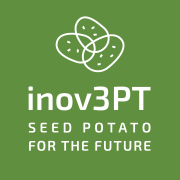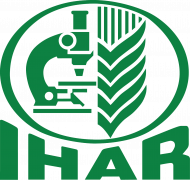Abstract
Photosynthetic properties and tuber yield were compared in seven tetraploid potato (Solanum tuberosum L.) clones (‘13-VIII-10’, ‘13-VIII-27’, ‘13-VIII-45’, ‘13-VIII-49’, ‘13-VIII-50’, ‘13-VIII-60’, ‘TG-97-403’) and three cultivars (‘Jelly’, ‘Satina’, ‘Tajfun’) at four localities in Poland under either integrated (Młochów, Boguchwała) or organic (Radzików, Chwałowice) fertilisation conditions applying the ‘OJIP’ analysis of chlorophyll fluorescence kinetics. The yield-relevant parameters of leaf pigment content and chlorophyll fluorescence were used to rank the tested clones and cultivars applying multidimensional comparative analysis. The results indicate that the clones 13-VIII-10 and 13-VIII-45 cannot be recommended for cultivation, while cv. Taifun performed the best. The assessment of the efficiency of the light reactions of photosynthesis produced a different ranking, indicating that the efficiency is not related to yield, but characterises the balance between light harvesting and dark reactions of photosynthesis. In this respect, the light reactions of photosynthesis were least balanced in clone 13-VIII-49 and cv. Jelly while those of cv. Taifun and clone 13-VIII-60 were the best. The effect of the production system was of minor significance for tuber yield, but local factors dominated. Only in the case of chlorophyll (Chl) and carotenoid (Car) contents of leaves did an effect of the production system became evident, favouring integrated over organic cultivation. By contrast, most of the chlorophyll fluorescence parameters were controlled by soil nitrogen content, including maximum quantum yield for primary photochemistry (φP0) and the absolute and total performance indices (PIAbs, PITotal). Within a production system precipitation affected the ratio Car/total Chl content.













